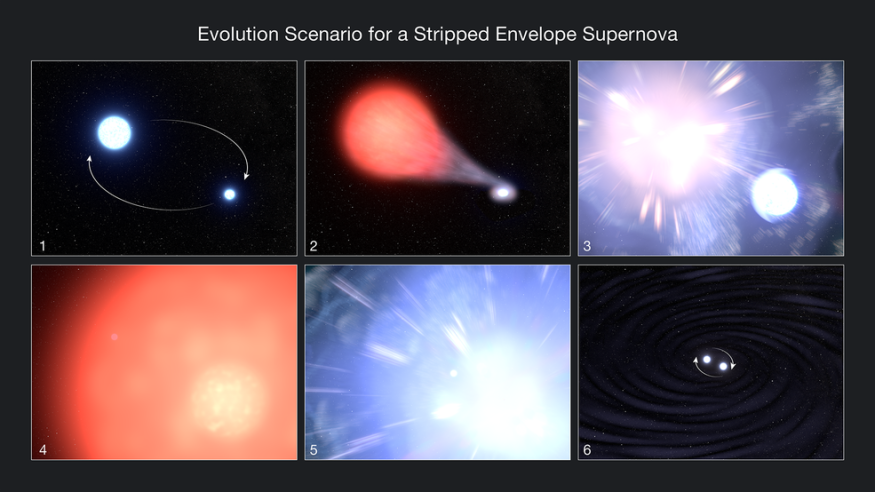NASA Hubble Space Telescope discovered a supernova companion star that had previously been obscured by the glare of the celestial explosion.
It is the first time astronomers have directly observed a supernova, which occurs when a star loses its whole outer gas envelope before exploding, as predicted mathematically.
Researchers published their study, "The Candidate Progenitor Companion Star of the Type Ib/c SN 2013ge," in Astrophysical Journal Letters published the team's paper.

NASA/ESA Hubble Space Telescope Finds Supernova Without Hydrogen
The hydrogen loss was unknown for that incident, according to News 9 Live. Therefore, scientists used the NASA/ESA Hubble Space Telescope to look for evidence and test theories to explain these stripped supernovae.
Astronomers discovered numerous elements in a supernova. When no hydrogen is found following a supernova, it suggests that the star's outer layer hydrogen has been stripped away. The hydrogen loss was produced by Supernova (SN) 2013ge.
The latest Hubble data provide the most substantial evidence yet that an unseen companion star siphons off the gas envelope from its partner star before it explodes.
Astronomer Ori Fox of the Space Telescope Science Institute in Baltimore, Maryland, lead investigator on the Hubble research program, said in a NASA release: "This was the moment we had been waiting for, finally seeing the evidence for a binary system progenitor of a fully stripped supernova."
He added that the idea is to transfer this field of study from theory to facts and examine how these systems perform in practice.

ALSO READ : NASA Hubble Space Telescope Celebrates 32nd Birthday: Here's What It Accomplished In The Past Decade
Ultraviolet Emission Causes SN 2013ge to Survive
Dr. Fox and his colleagues analyzed SN 2013ge in ultraviolet light using images from Hubble's Wide Field Camera 3 (WFC3) and the Barbara A. Mikulski Archive for Space Telescopes, SciNews reported.
From 2016 to 2020, they observed the supernova's light diminishing. Still, another nearby source of ultraviolet light at the same location remained bright.
They believe that this underlying source of UV emission is the surviving binary companion to SN 2013ge.
Astronomers previously observed two peaks in the ultraviolet light of SN 2013ge, rather than the single peak seen in most supernovae.
One theory for the double brightening is that the second peak showed when the supernova's shock wave collided with a companion star, according to Dr. Fox.
He added that Hubble's most recent measurements show that the companion star was jostled but not destroyed, despite the hydrogen gas it had drained from its partner.
While further evidence and similar findings are needed, the discovery's implications are important, adding weight to the notion that most massive stars begin and grow as binary systems.
RELATED ARTICLE : NASA Hubble Space Telescope Shares Stunning Photo of 5 Galaxies About To Collide; Will Galactic Wings Save Them?
Check out more news and information on Space in Science Times.
© 2025 ScienceTimes.com All rights reserved. Do not reproduce without permission. The window to the world of Science Times.












